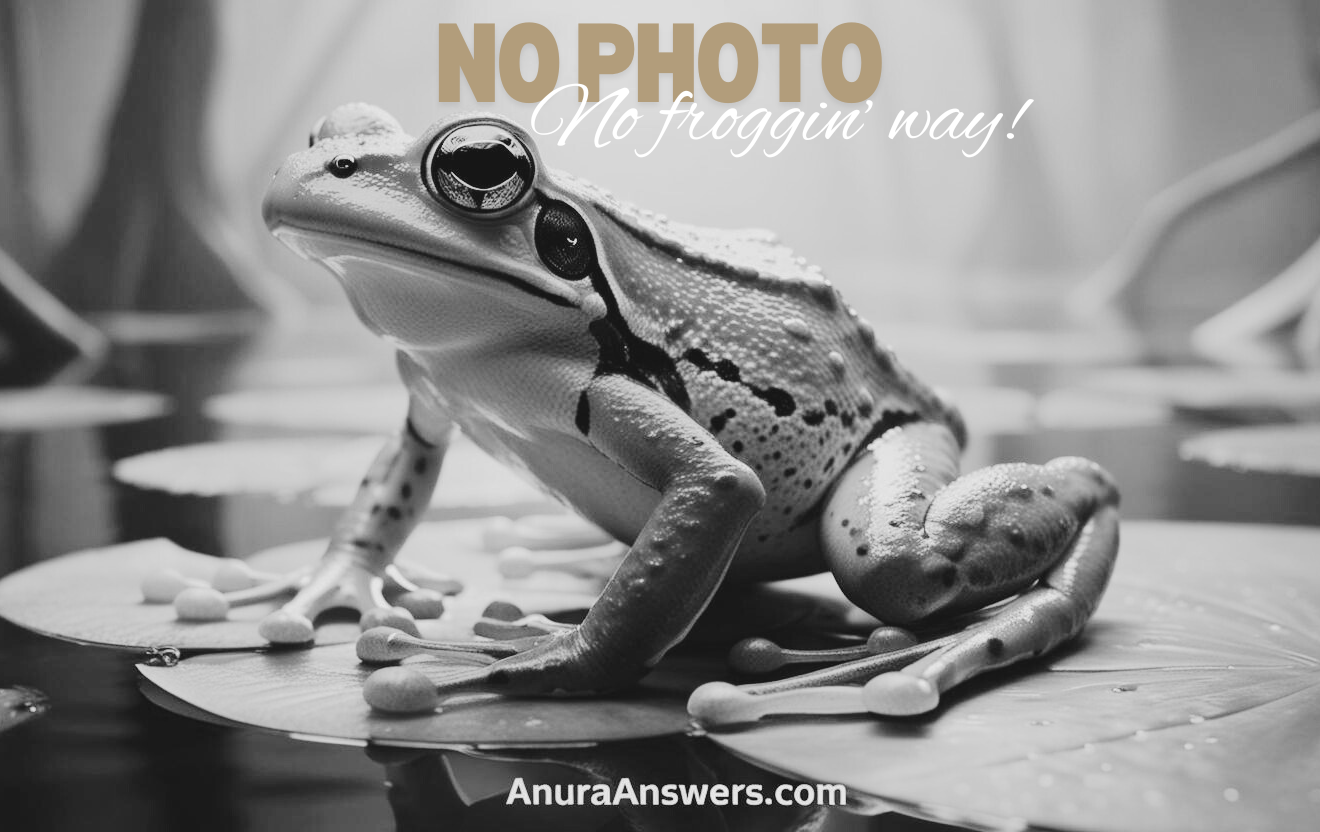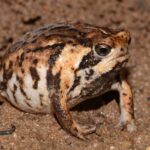Amazophrynella moisesii: Secrets of the Tiny Guardian of the Amazon Understory#
Deep in the shadowy embrace of the Amazon rainforest, hidden beneath layers of dense vegetation and the soft murmur of dripping leaves, lies a small, enchanting creature. Barely larger than a human thumbnail, the Amazophrynella moisesii, a remarkable frog species, reigns quietly among leaf litter, moss-covered logs, and tangled roots. Known scientifically as Amazophrynella moisesii, this diminutive amphibian has fascinated herpetologists, naturalists, and conservationists alike since its recent discovery. Though it may lack the colorful brilliance of many tropical frogs, its subtle beauty, secretive ways, and ecological importance make it no less intriguing. In fact, its small stature belies a large significance as an indicator of environmental health, a predator of tiny forest insects, and a silent guardian of the rainforest ecosystem.
Taxonomy and Classification#
Amazophrynella moisesii resides within the expansive and ecologically pivotal family Bufonidae, commonly known as true toads. While their larger relatives span continents and vary significantly in size and color, Amazophrynella moisesii and its immediate relatives within the genus Amazophrynella distinguish themselves as miniature representatives, specialists adapted to life amidst the leaf litter of tropical forests.
Discovered and officially described in 2018 by Brazilian herpetologists Carvalho et al., Amazophrynella moisesii belongs to a genus whose members are collectively known as Amazonian tiny toads. Close relatives, such as Amazophrynella minuta and Amazophrynella amazonicola, similarly inhabit regions of tropical South America, underscoring the incredibly diverse yet finely tuned ecological niches these amphibians exploit.
Natural Habitat#
The Amazophrynella moisesii makes its home deep in the western Brazilian Amazon, endemic primarily to the region surrounding Acre and adjacent western Amazonian Peru. The landscape is one of breathtaking ecological complexity—countless vines twist skyward, colossal trees overshadow the ground, and layers of fallen leaves blanket the forest’s floor. It is precisely among these layers, dark and damp, that our tiny amphibian flourishes.
Life Amidst the Leaf Litter#
Rather than climbing into the canopy or dwelling in streams, Amazophrynella moisesii thrives within the humid, richly organic environment of the leaf litter itself. Here, moisture levels remain ideal, temperatures stable, and hiding places abundant. Its entire life is intricately tied to this microhabitat—an intricate mosaic of decomposing leaves, fungi, decomposers, and predators. The subtlety of its presence is such that even experienced researchers often pass by without noticing this tiny occupant.
This delicate balance is not accidental. The frog’s existence perfectly embodies the interconnectedness of the rainforest ecosystem. The health and stability of leaf litter habitats reflect the broader forest health, and thus researchers often view species such as Amazophrynella moisesii as vital indicators of ecological change or ecosystem distress.
Physical Characteristics#
The Amazophrynella moisesii may not capture immediate attention with vibrant colors or showy features. Instead, its quiet beauty emerges only upon close inspection. Adult individuals typically reach only about 12 to 15 millimeters in length, making them one of the Amazon’s tiniest amphibians. Their diminutive size represents a remarkable adaptation; it allows them to thrive within microhabitats inaccessible to most larger species. Often mistaken initially for insects, their appearance reflects a meticulous evolutionary path geared towards camouflage and concealment.
The Art of Natural Camouflage#
The coloration pattern of Amazophrynella moisesii displays shades of subtle browns, creams, and grays, intricately mottled to facilitate blending seamlessly into the surrounding leaf litter. Upon back and sides, cryptic patterns appear like scattered speckles, irregular streaks, and subtle blotches, mimicking the shifting patterns and colors of decaying foliage and soil. Even their movements lend themselves to disguise—slow, cautious, purposeful shifts rather than quick jumps or abrupt movements, further enhancing their concealment from predators and prey alike.
In addition to this impressive camouflage, Amazophrynella moisesii boasts skin adaptations, subtly granular textures that mimic decomposing vegetation’s rough, uneven surfaces. These micro-adaptations indicate a finely tuned evolutionary relationship between species and habitat, arising from generations of selective pressure and ecological stability.
Behavior and Life Cycle#
Invisible to many eyes, yet completely visible to the attentive researcher, Amazophrynella moisesii engages in intriguing behaviors directly shaped by their environment. During the moist months of the rainy season, males vocalize from protected areas beneath leaves, producing faint, insect-like calls audible only at close proximity. Vocalizations attract females, who, carefully navigating their hidden realm, select mates based on call quality and territory suitability.
A Unique Reproductive Strategy#
Females typically lay clusters of tiny eggs within carefully selected moist locations amidst leaves on the forest floor, avoiding outright flooding yet ensuring sufficient humidity. While details remain somewhat obscure due to the species’ relatively recent description and secretive habits, tadpole development likely mirrors related forest-floor Bufonidae, characterized by rapid development within semi-aquatic microhabitats formed by rainfall collection among leaf litter.
Feeding behavior similarly exhibits adaptations to this micro-world. The species predominantly preys upon diminutive invertebrates abundant within leaf litter communities—collembolans, mites, ants, and tiny beetle larvae form their staple diet. Employing a stealthy, lie-in-wait hunting strategy, Amazophrynella moisesii captures prey swiftly with its agile tongue, assisting in regulating prey populations and thereby maintaining delicate ecosystem balance.
Ecological Role#
As predator and prey, Amazophrynella moisesii serves a crucial role within its ecosystem. By preying upon small invertebrates, the species significantly influences the composition and abundance of these foundational creatures, indirectly impacting decomposition processes and nutrient cycling indispensable to forest ecology.
Simultaneously, it constitutes the prey basis for a variety of larger arthropods, reptiles, birds, small mammals, and even other amphibians. As such, its abundance or scarcity can ripple throughout food webs, reflecting ideal forest conditions or underlying environmental disturbances.
Threats and Conservation Status#
The Amazon rainforest, despite its vast size and global importance, remains vulnerable to countless threats. Habitat destruction presents the greatest challenge for amphibians such as Amazophrynella moisesii; deforestation, logging, agricultural expansion, mining, and urbanization continue to encroach upon forests. As specialized leaf litter dwellers, even subtle disruptions in habitat moisture or structure can devastate local populations.
Climate change likewise poses insidious threats, altering rainfall patterns and microhabitats upon which species depend heavily. Currently, the IUCN has not yet formally assessed the status of Amazophrynella moisesii specifically due to its recent description and limited distribution data. However, given known threats to similar species, conservationists remain vigilant.
Fortunately, concerted efforts at national and international levels are leading towards improved rainforest protection and restoration in key Amazonian regions. Scientific research, monitoring amphibian communities, identifying vital habitats, and advocating sustainable forest use all contribute significantly to safeguarding this elusive species.
Cultural and Scientific Significance#
Beyond ecology alone, Amazophrynella moisesii symbolizes the richness still hidden within our natural world. Its recent discovery underlines the continued importance of biodiversity exploration and emphasizes that even well-studied ecosystems harbor countless species yet unknown.
On a cultural and symbolic level, indigenous Amazonian communities frequently recognize amphibians as powerful indicators of environment and health. While direct cultural information specifically on Amazophrynella moisesii remains scant, closely related species appear in local traditions as symbols of ecological balance and harbingers of environmental change.
Conclusion#
Though tiny, secretive, and relatively unknown, Amazophrynella moisesii embodies the extraordinary intricacies and vulnerabilities of life beneath the Amazon’s towering canopy. Its significance extends far beyond mere curiosity, serving as a sentinel species that reminds us how heavily our profound ecosystem health relies on even the smallest inhabitants. As responsible stewards of the natural world, it behooves us all to support conservation efforts, deepen our appreciation for biodiversity, and protect habitats from which these wondrous species emerge.
Let Amazophrynella moisesii inspire us to see value in the unseen, celebrate the unnoticed beauty of the world’s smallest living things, and commit ourselves wholeheartedly to preserving and cherishing the irreplaceable ecosystems that sustain them.







